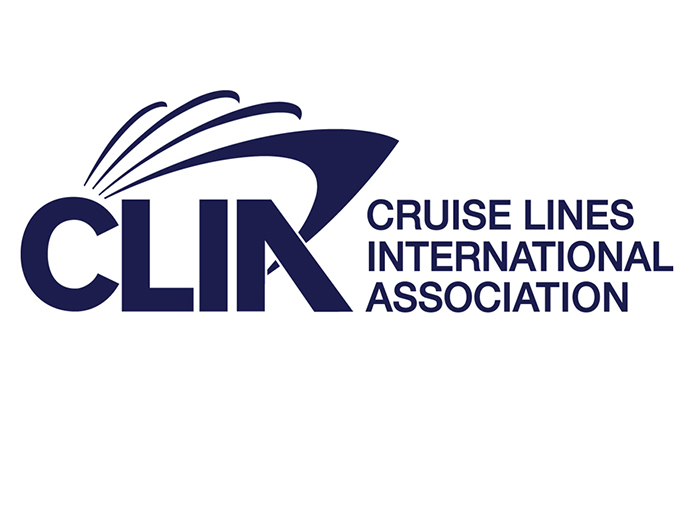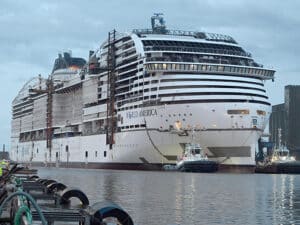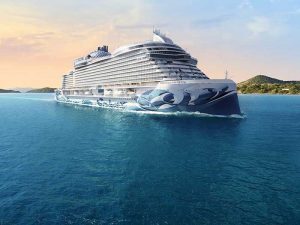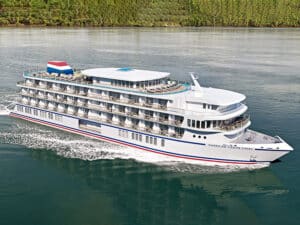
CLIA releases 2020 cruise industry environmental technologies and practices report
Written by Marine Log Staff
The Cruise Lines International Association (CLIA) today released the latest Global Cruise Industry Environmental Technologies and Practices Report produced by Oxford Economics.
The report highlights the progress that CLIA oceangoing cruise line members are making on developing and implementing advanced technologies and practices to achieve lower emissions, greater efficiencies, and a cleaner environment onboard, at sea and in port.
While cruise ships comprise far less than 1 percent of the global maritime community, the latest report substantiates how cruise lines have taken a leading role in the adoption of maritime technologies that benefit the entire shipping industry.
To date, the cruise industry has invested over $23.5 billion in ships with new technologies and cleaner fuels to reduce air emissions and achieve greater efficiency. This is a $1.5 billion increase over the 2019 report findings.
“Even as we have worked to address and overcome the impacts of COVID-19, the cruise industry remains committed to a cleaner, more sustainable future. With over $23 billion invested in ships with new technologies and cleaner fuels, such as exhaust gas cleaning systems and liquified natural gas, I can only imagine what we will accomplish together in the next ten years and beyond,” said Kelly Craighead, president and CEO of Cruise Lines International Association (CLIA). “This report affirms our commitment to environmental sustainability and I commend our members for their continued leadership and demonstration of the highest standards of responsible tourism.”
CLIA says that cruise lines were the first to publicly commit as a maritime sector, to reduce the rate of carbon emissions by 40% by 2030 compared to 2008.
Substantial progress has been achieved in the following areas:
LNG Fuel – The 2020 report found 49% of newbuild capacity will rely on LNG fuel for primary propulsion, a 51% increase in overall capacity compared to 2018.
Exhaust Gas Cleaning Systems (EGCS) – More than 69% of global capacity utilizes EGCS to meet or exceed air emissions requirements, an increase in capacity of 25% compared to 2018. Additionally, 96% of non-LNG newbuilds will have EGCS installed, an increase in capacity of 21% compared to 2019.
Advanced Wastewater Treatment Systems – 99% of new ships on order are specified to have advanced wastewater treatment systems (bringing global capacity to 78.5%) and currently 70% of the CLIA oceangoing cruise line fleet capacity is served by advanced wastewater treatment systems (an increase of 5% over 2019).
Shore-side Power Capability – In port, cruise ships are increasingly equipped with the technology to allow delivery of shoreside electricity, thus allowing engines to be switched off, and there are many collaborations with ports and governments to increase the availability.
75% of the new build capacity is either committed to be fitted with shore-side electricity systems or will be configured to add shore-side power in the future. The report says 32% of global capacity (up 13% since 2019) is fitted to operate on shore-side electricity in the 14 ports worldwide where that capability is provided in at least one berth in the port.
“The cruise industry works every day to advance its responsible tourism efforts and recognizes that continued and greater investment in research is critical to identifying and producing new fuels and propulsion systems,” said Adam Goldstein, Chairman of CLIA Global. “This is why CLIA along with other maritime sector partners have proposed to establish and fund a $5 billion Research and Development Board dedicated to working collaboratively across the sector to identify the technologies and energy sources that will provide additional opportunities to lessen our environmental footprint and meet the ambitious goals set by the IMO.”
Download the report HERE




